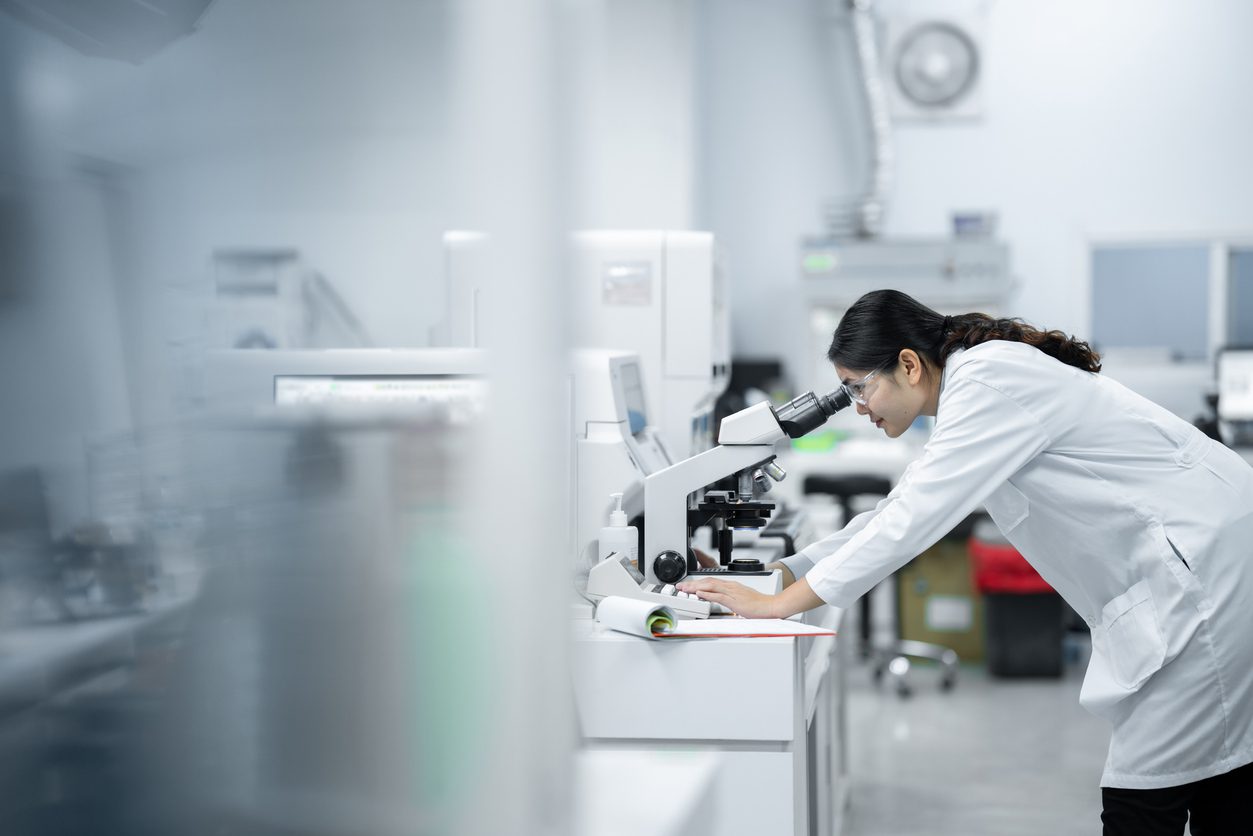T1553/22 – Morality and exclusion from patentability of inventions related to human-porcine chimeras.
In the recent decision T1553/22, the Board of Appeal considered whether methods of producing a human-porcine chimera and a chimeric animal itself are excluded from patentability under Article 53(a) EPC, on the basis that such inventions are “offensive to human dignity”.
T1553/22 concerns the decision of the EPO Examining Division to refuse European patent application no. 16759528.9. The application concerned the production of human-porcine chimeric animals, for the purpose of providing a source of human vasculature and blood. These chimeras are produced by creating a non-human blastocyst lacking a developmental gene, ETV2, necessary for blood vessel and blood cell development, and introducing human pluripotent cells having the missing gene. The claims of the application under consideration in this decision related to methods of producing a human-porcine chimeric animal, a human-porcine chimeric blastocyst and a chimeric animal.
The claims at issue:
-
- A chimeric non-human blastocyst expressing human ETV2 and lacking expression of said non-human animal ETV2, wherein the blastocyst is porcine.
- A chimeric non-human animal expressing human ETV2 and lacking expression of said non-human animal ETV2 wherein the non-human animal expresses human blood cells selected from the group consisting of white blood cells, red blood cells, platelets or a combination thereof and wherein the chimeric non-human animal is porcine.
- A method for producing a chimeric non-human animal expressing humanized vasculture [sic] and humanized blood, comprising:
a) generating an ETV2 null non-human animal cell, wherein both copies of the non-human ETV2 gene carry a mutation that prevents production of functional ETV2 protein in said non-human animal;
b) creating an ETV2 null non-human blastocyst by somatic cell nuclear transfer comprising fusing a nucleus from said ETV2 null non-human animal cell of (a) into an enucleated non-human oocyte and activating said oocyte to divide so as to form an ETV2 null non-human blastocyst completely lacking the endothelial and hematopoietic lineages and providing a niche for human stem cells to populate;
c) introducing human stem cells into the ETV2 null non-human blastocyst of (b); and
d) implanting said blastocyst from (c) into a pseudopregnant surrogate non-human animal to generate a chimeric non-human animal with ETV2 induced humanized vasculture and humanized blood; wherein said non-human is porcine and the human donor stem cells are pluripotent stem cells, induced pluripotent stem cells or umbilical cord blood stem cells (UCBSC).
Legal background
Article 53(a) EPC excludes from patentability inventions the commercial exploitation of which would be contrary to “ordre public” or morality. This provision is supplemented by Rule 28(1) EPC, which provides a non-exhaustive list of biotechnological inventions excluded from patentability, including processes for cloning human beings and uses of human embryos for industrial or commercial purposes.
By virtue of Rule 26(1) EPC, Directive 98/44 EC of July 1998 on the legal protection of biotechnological inventions is also used as a supplementary means of interpretation. Notably, Recital 38 of the Directive states that “processes, the use of which offend against human dignity, such as processes to produce chimeras from germ cells or totipotent cells of humans and animals, are obviously also excluded from patentability”.
Appeal and decision
The applicant appealed against the decision of the Examining Division on the basis that the Division was unduly restrictive in their application of Article 53(a) EPC. The applicant argued that Rule 26(1) EPC states that the Directive 98/44/EC is only to be used as a supplementary means of interpretation. Further, the applicant noted that Recital 38 of the Directive refers to “processes to produce chimeras from germ cells or totipotent cells of humans and animals”, while the claims of the application concerned blastocysts and methods involving pluripotent cells.
The applicant argued that the accepted principle of narrow interpretation of exclusions necessarily prevented the extension of the exclusion beyond the specific wording of Recital 38. However, the Board held that the “object and purpose” of a provision must nonetheless be assessed to understand the rationale underlying the specific listed exclusions.
The Board maintained that Recital 38 provides a non-exhaustive list of exclusions and provides guidance on how to interpret exclusions based on ordre public and morality. Though Recital 38 did not directly apply, as it does not relate to chimeras as such and processes using pluripotent stem cells, the Board took into consideration the rationale behind the specific exclusions of Recital 38 in the application of Article 53(a) EPC. Namely, the production of chimeras identified in Recital 38 was regarded as being offensive to human dignity due to concerns that, in such chimeras, human cells may integrate into the brain and/or develop into germ cells, resulting in a chimera with human or human-like capabilities.
Totipotent stem cells can develop into any cell type, thus can form an entire organism. Pluripotent stem cells, as recited in the claims of the application, can differentiative into most cell types, including neural and germ cells, but not extra-embryonic tissues, i.e. cannot form a placenta. Accordingly, the Board found the underlying rational of Recital 38, referring to processes involving totipotent cells, to also be relevant to cases involving pluripotent cells. They found that pluripotent cells may similarly integrate into a chimera’s brain or germ line, resulting in the development of human-like cognition or behaviour, or the ability to pass on such traits.
The Board deemed that, based on the documents presented and the balance of probabilities, there was no technical reason to dismiss the ethical concerns raised in the literature that human cells may be introduced into the brain or germ line of a chimera.
The applicant further argued that the Examining Division had not shown that human cells would be found in the chimera other than in the niche corresponding to the deleted porcine gene (ETV2). In particular, the applicant submitted evidence to attest that human cells did not participate in the chimera’s brain cells or germ cells. The applicant also added that the ethical concerns expressed in scientific publications “merely followed the established practice of adding afterthoughts to the report of the actual scientific work”, and that such afterthoughts were “merely speculative”.
However, the Board disagreed, finding that the available scientific literature concluded the introduction of human cells to the brain or germ line of a chimera as a real possibility, and could not be dismissed as mere speculation. Indeed, the Board found that the claims did not recite any limitations or disclaimers excluding the production of such chimeras. For instance, the Board noted that previous endeavours had avoided the exclusion by claiming chimeras that deliberately lacked certain developmental genes, or that used a limited number of human pluripotent cells in the blastocyst, as measures to prevent further development of human features. In contrast, in the present case, no such limitations were recited.
Thus, in view of the prevailing scientific consensus of the real risk of producing a human-animal chimera with human cells in the brain or germ line and the lack of any language excluding such chimeras, the claims were deemed to be excluded from patentability.
Conclusion
This decision emphasises the consideration of the “object and purpose” of provisions setting out exclusions from patentability and provides a notable warning against relying on narrow interpretations of explicit exclusions. Though Rule 28(1) EPC and Recital 38 of the Directive set out specific exclusions from patentability, these are non-exhaustive lists and can provide guidance on further subject matter excluded as being contrary to morality under Article 53(a) EPC.
This case also stresses the importance of carefully drafting patent applications, to provide suitable limitations or disclaimers that omit excluded subject-matter from the scope of protection. Biotechnologies intending to provide alternative sources for human transplant and transfusion tissues are undoubtedly valuable. However, this decision highlights the need to navigate statutory exclusions carefully to ensure technological ingenuity is not tainted by offenses “to human dignity”.
Meet our biotechnology team.


